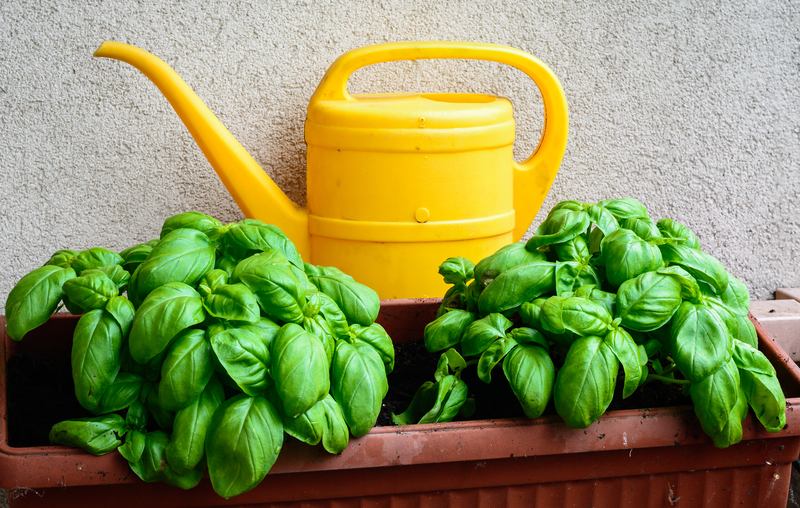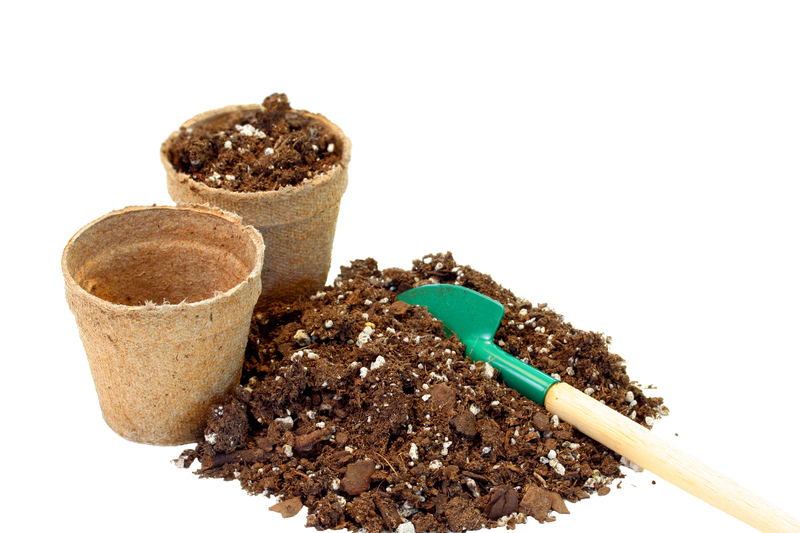Beginner Lawn Care Unveiled: Secrets for Healthy, Green Grass
Are you new to lawn care and dreaming of a lush, vibrant yard? Whether you're moving into your first home or finally ready to revitalize your outdoor space, learning the essentials of lawn care is your first step toward that beautiful, green landscape you've always wanted. Healthy grass doesn't happen by accident--it's a mixture of science, consistency, and a little bit of love! This comprehensive guide unveils the best beginner tips for green grass, perfect for those just starting their lawn care journey.
Why Lawn Care Matters: More Than Just Aesthetic Appeal
A well-maintained lawn boosts your home's curb appeal and provides a soft space for kids and pets. But that's just the beginning. Healthy lawns:
- Combat soil erosion
- Help filter rainwater
- Reduce outdoor dust and allergens
- Improve outdoor air quality
- Provide a habitat for beneficial insects
Ready to transform your yard? Read on as we unveil the secrets every beginner should know for lush, green grass success!

Understanding Your Lawn: Types of Grass and Soil
Know Your Grass Type
Not all grass is created equal. Learning which type is present in your yard is the first step toward tailored lawn care. The two main grass families are:
- Cool-season grasses: Kentucky bluegrass, Fescue, Ryegrass--best for northern climates
- Warm-season grasses: Bermuda, Zoysia, St. Augustine--thrive in southern regions
Pro Tip: Not sure what grass you have? Ask your local garden center or send a sample to a county extension office for identification.
Soil Health: The Foundation of Green Lawns
Your soil's condition plays a vital role in supporting healthy grass. Here's what every beginner should know:
- Healthy soil is teeming with beneficial microbes
- Soil texture (sand, silt, clay) affects water and nutrient retention
- pH level impacts nutrient uptake--most grasses thrive at pH 6.0-7.0
Status unsure? Get a soil test kit--most garden centers or local extensions offer affordable options.
Secret #1: Mastering the Mowing Technique
The Importance of Proper Mowing
Mowing incorrectly is a common beginner mistake. Here's the secret: Never cut more than one-third of the grass blade at a time. Cutting too short, also known as "scalping," weakens the roots and invites weeds.
Tips for Beginner Lawn Mowing
- Keep your mower blade sharp for a clean cut
- Mow when the grass is dry to avoid clumping
- Alter your mowing pattern weekly to prevent soil compaction
- Leave grass clippings--they're natural mulch and add nutrients back into the soil
Secret #2: Watering Wisdom for Healthy, Green Grass
How Often Should Beginners Water Their Lawn?
Overwatering is just as harmful as underwatering. The golden rule for watering new lawns and established greens is deep and infrequent sessions.
- Most lawns need 1-1.5 inches of water per week, including rainfall
- Water in the early morning--this prevents disease and reduces evaporation
- Avoid watering at night; it leads to fungal growth
Smart Tip: Place a small tuna can on your grass--when it's full after watering, you've hit about an inch!
Secret #3: Feeding Your Lawn--Fertilization Basics
What to Feed for Lush, Green Grass?
Fertilizing is essential for thick, healthy lawns. But for beginners, too much fertilizer can do more harm than good. Choose a slow-release fertilizer made for your grass type and region.
- Apply fertilizer in early spring and fall for cool-season grasses
- Fertilize warm-season grasses in late spring and summer
- Follow product instructions exactly--never guess amounts
- Organic options, like compost or bio-based fertilizers, improve soil health naturally
Remember: Some municipalities restrict phosphorus use due to runoff concerns--check local regulations before applying.
Secret #4: Controlling Weeds and Lawn Pests
Beginner Strategies for Weed-Free Lawns
Nothing ruins a perfect green lawn like weeds. Prevention is easier than curing a weed-invaded lawn. Here's how:
- Mow at the right height--taller grass shades out weed seeds
- Hand pull weeds when the soil is moist for easier removal
- Use pre-emergent herbicides in spring for crabgrass prevention
- Avoid blanket chemical use--target trouble spots only
Lawn Pest Management
- Look out for brown patches, thinning, or chewed blades--signs of insect problems
- Grubs, chinch bugs, and sod webworms are common beginner headaches
- Encourage beneficial insects (like ladybugs) to control pests naturally
- Ask experts before using insecticides--misuse can harm helpful pollinators and your grass
Secret #5: Aeration and Dethatching for Healthier Lawns
Why Aerate?
Over time, soil becomes compacted, making it hard for water, air, and nutrients to reach the roots. Aerating (removing small plugs of soil) keeps your turf strong.
- Ideal time: once a year, preferably in early spring or fall
- Use a core aerator for best results--spike aerators are less effective
- Rent equipment or hire a professional if your lawn is large
Understanding Dethatching
Thatch is a layer of dead grass, roots, and debris above the soil. Up to a half-inch is beneficial, but too much chokes your lawn.
- Rake out thick thatch or use a dethatching machine
- Best time: when grass is actively growing and soil is moist
Secret #6: Overseeding for Thicker, Greener Grass
If your lawn looks thin or patchy, overseeding can help. This method introduces new grass seed on top of existing turf, filling bare spots and improving thickness.
- Choose a seed blend matching your current grass type
- Best time is early fall (cool-season) or late spring (warm-season)
- Aerate beforehand to improve seed-to-soil contact
- Keep the area moist until seeds germinate and new growth appears
Secret #7: Seasonal Lawn Care for Year-long Greenery
Spring
- Test soil and apply fertilizer if needed
- Repair bare patches by overseeding
- Start regular mowing and watering schedule
Summer
- Water deeply during dry spells
- Raise mower height to shade roots
- Look out for pests and treat promptly
Fall
- Fertilize cool-season grasses
- Aerate and overseed as needed
- Continue mowing until grass becomes dormant
Winter
- Limit foot traffic to avoid damaging dormant grass
- Remove heavy debris like leaves and branches
- Prep tools for next season
Common Beginner Lawn Care Mistakes -- and How to Avoid Them
- Cutting grass too short ("scalping"): Always follow the one-third rule.
- Overwatering or watering at night: Stick to early morning, once or twice a week.
- Skipping soil tests: Soil health is the foundation--test before tackling problems.
- Improper fertilizer application: Over-fertilizing can burn grass and pollute waterways.
- Ignoring weeds and pests until it's too late: Early intervention is key.
Essential Tools for Beginner Lawn Care
Equip yourself with the right tools--these basics make new lawn maintenance simple and efficient:
- Lawn mower (manual, electric, or gas)
- Garden hose and sprinkler, or irrigation system
- Grass seed spreader
- Manual or power rake for dethatching
- Soil test kit
- Core aerator (can be rented annually)
- Hand weeder or hoe for spot weeding

Frequently Asked Questions: Lawn Care for Beginners
How do I know if my lawn needs fertilizing?
Yellowing or slow-growing grass may indicate a nutrition deficiency. A soil test reveals what's lacking, guiding you to the correct fertilizer choice.
Can I start a healthy lawn from seed?
Yes! Prepare the soil by loosening it, spread the right seed blend, cover lightly with soil or straw, and keep watered until the grass is well established.
How do I treat bare or thin spots?
Remove dead grass, loosen the soil, seed the area, and water consistently. Overseeding in the right season helps fill in these areas quickly.
What's the best way to keep pests away?
Encourage healthy soil and grass first. Remove thatch and avoid overwatering. If pests persist, attract beneficial insects or use targeted pest controls as a last resort.
Should I bag my grass clippings?
Usually, no--mulching clippings returns nutrients to the soil. Only bag if clippings are thick enough to smother the grass or if you're dealing with weed seeds.
Conclusion: Unlock the Secrets to Healthy, Green Grass!
Starting your lawn care journey may seem daunting, but by following these proven secrets and tips, even beginners can cultivate a lush, green lawn that's the envy of the neighborhood. Remember: every great lawn starts with understanding your grass and soil, establishing a simple routine, and avoiding common beginner mistakes. From mowing and watering wisdom to fertilizing and seasonal care, you're now equipped to grow healthy, vibrant grass--year after year!
Embrace these beginner lawn care secrets, and watch your outdoor space transform. For more tips on maintaining green grass and practical lawn solutions, bookmark this guide and revisit whenever your yard needs a pick-me-up.
Happy gardening and enjoy your beautiful, green lawn!